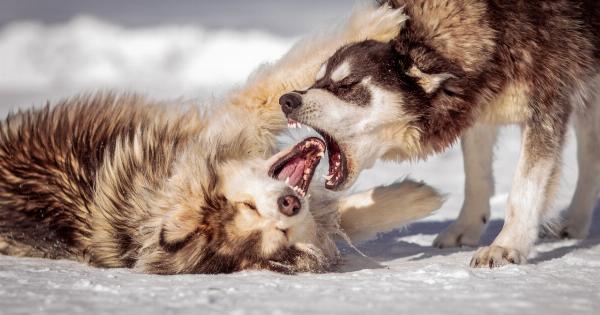Having a dog is a wonderful experience, but sometimes our furry friends can exhibit problem behaviors that can be frustrating and challenging to deal with.
From excessive barking to chewing on furniture, these behaviors can disrupt our daily lives and create tension between us and our beloved pets. However, with a few simple methods, you can address and rectify these problem dog behaviors easily and effectively.
1. Proper Socialization
Socializing your dog from a young age is crucial to prevent problem behaviors. By exposing your puppy to different people, animals, and environments, you can help them become confident and well-adjusted.
Attend puppy socialization classes, take them for regular walks, and introduce them to new experiences gradually to ensure positive associations.
2. Consistent Training
Training your dog consistently is essential to ensure that they understand and follow basic commands. Focus on positive reinforcement techniques like rewards and praise rather than punishment-based training methods.
Consistency is key, so set aside regular training sessions and incorporate commands into your daily routine.
3. Exercise & Mental Stimulation
Many problem behaviors in dogs result from excess energy and boredom. Make sure your dog gets enough physical exercise through daily walks, playtime at the park, or engaging in activities like dog sports.
Additionally, provide mental stimulation through puzzle toys, obedience training, and interactive play sessions to keep them mentally challenged and entertained.
4. Address Separation Anxiety
Sepreateion anxiety is a common problem behavior in dogs that can lead to destructive behaviors such as excessive barking, chewing furniture, or soiling in the house when left alone.
Gradual desensitization techniques, crate training, and leaving them with stimulating toys or treats can help alleviate separation anxiety.
5. Stop Excessive Barking
Barking is a natural behavior for dogs, but excessive barking can be problematic. Identify the triggers for your dog’s excessive barking, such as boredom, fear, or attention-seeking, and address them accordingly.
Provide appropriate outlets for their energy, teach the “quiet” command, and avoid reinforcing the barking behavior unintentionally.
6. Prevent Destructive Chewing
Dogs explore their world through chewing, but when this behavior becomes destructive, it needs to be addressed. Provide your dog with plenty of appropriate chew toys and ensure they have a safe and designated area for chewing.
Use deterrent sprays or bitter-tasting substances on objects you want to protect, and always supervise your dog to redirect their chewing behavior.
7. Manage Aggression
Aggression in dogs can be a serious problem that requires professional help. If your dog shows aggression towards other animals or people, consult with a certified dog trainer or behaviorist who can develop a tailored behavior modification plan.
Avoid punishing your dog for aggressive behaviors, as this may escalate the situation.
8. Handling Fear and Anxiety
Dogs can exhibit fear and anxiety in various situations, such as thunderstorms, fireworks, or visits to the veterinarian.
Provide a safe space for your dog to retreat to during these events, use calming aids such as pheromone diffusers or anxiety wraps, and gradually desensitize them to the triggering stimuli through counter-conditioning techniques.
9. Addressing Leash Reactivity
Leash reactivity, where a dog displays aggressive or reactive behaviors when on a leash, can be challenging to handle.
Work on redirecting your dog’s focus with positive reinforcement training techniques, such as “look at me” commands or “leave it” cues, and gradually expose them to controlled environments where they can interact positively with other dogs or people.
10. Seek Professional Help
If you’re struggling to address your dog’s problem behaviors or if they escalate despite your efforts, seeking professional help is crucial.
Certified dog trainers or behaviorists can assess the situation accurately and provide you with a behavior modification plan tailored to your dog’s specific needs.


























